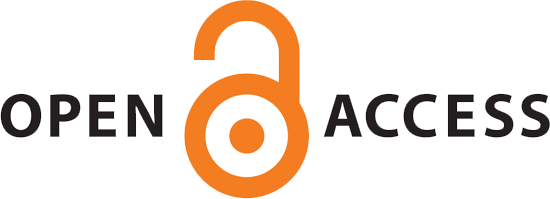Single Shot Pectoral Plane Block Type 2 (PECS II) Versus Serratus Anterior Plane Block for Postoperative Analgesia Following Modified Radical Mastectomy for Postoperative Acute and Long-Term Pain: A Randomized Clinical Trial
Abstract
Background: Effective management of postoperative pain in breast cancer surgery is crucial to enhance recovery and quality of life. Regional anesthesia techniques such as Pecs II and Serratus Anterior Plane Block (SAPB) have emerged as alternatives to systemic opioids. To compare the efficacy of single-shot Pecs II block and SAPB in terms of acute and long-term (up-to 2 months) postoperative analgesia following modified radical mastectomy.
Methods: A single-blind, randomized controlled trial was conducted on 46 ASA I-II female patients undergoing MRM, assigned to either Pecs II block (Group P) or SAPB (Group S), each with 30 mL of 0.25% bupivacaine. Numerical Rating Scale (NRS) scores at rest and during movement were recorded perioperatively and during 60-day follow-up. Secondary outcomes included time to first rescue analgesia, number of rescue analgesics in 48 hours, and adverse effects.
Results: Both blocks provided comparable acute pain relief in the first 48 hours (p>0.05). Group P showed significantly lower NRS scores at 15, 30, and 60 days at rest and on movement (p<0.05), indicating better long-term analgesia. There was no significant difference in rescue analgesic requirements or adverse effects.
Conclusion: Both Pecs II and SAPB offer effective acute postoperative pain control following MRM, while Pecs II provides superior long-term analgesia.
[2] Shaikh BF, Memon AK, Mahesh K, Yousuf, Zeeshan, Soomro E. Complications of modified radical mastectomy in carcinoma breast patients. Medical Channel. 2014; 20(1): 43-46.
[3] Kaur U, Shamshery C, Agarwal A, Prakash N, Valiveru RC, Mishra P. Evaluation of postoperative pain in patients undergoing modified radical mastectomy with pectoralis or serratus-intercostal fascial plane blocks. Korean J Anaesthesiol. 2020; 73: 425-433.
[4] Fajardo M, López S, Diéguez P, Alfaro P, García FJCMA. A new ultrasound-guided cutaneous intercostal branches nerves block for analgesia after non-reconstructive breast surgery. Cirugia Mayor Ambulatoria. 2013; 18: 3-6.
[5] Blanco R, Parras Maldonado T, McDonnell JG, Prats-Galino A. Serratus plane block: a novel ultrasound-guided thoracic wall nerve block. Anaesthesia. 2013; 68:1107–13.
[6] Alshawadfy A, Al-Touny SA. Comparing the quality of analgesia with ultrasound-guided pectoral nerve block and serratus anterior plane block II in patients undergoing modified radical mastectomy: a randomised clinical trial. Anaesthesiol Intensive Ther. 2023; 55:52–9.
[7] Blanco R, Fajardo M, Parras Maldonado T. Ultrasound description of Pecs II (modified Pecs I): a novel approach to breast surgery. Rev Esp Anestesiol Reanim. 2012; 59:470–5.
[8] Patel KM, de Guzman KD, Cronin K, van Helmond N, Krishnan S, Mitrev L, et al. Pectoralis I and Serratus Anterior Plane Block Analgesia for Bilateral Mastectomy: A Case Series. Pain Physician. 2024;27(10): E1117-E1122.
[9] Kulhari S, Bharti N, Bala I, Arora S, Singh G. Efficacy of pectoral nerve block versus thoracic paravertebral block for postoperative analgesia after radical mastectomy: a randomized controlled trial. Br J Anaesth. 2016; 117:382–6.
[10] De Cassai A, Bonanno C, Sandei L, Finozzi F, Carron M, Marchet A. PECS II block is associated with lower incidence of chronic pain after breast surgery. Korean J Pain. 2019;32(4):286-291.
[11] Sheehan L, Britten G, Clark S. A pilot study to evaluate the efficacy of PEC blocks in minimising chronic post-mastectomy pain. J Solid Tumors. 2021;10(2):30.
[12] Jain D, Mohan VK, Bhoi D, Batra RK, Kashyap L, Shende D, et al. Analgesic efficacy and spread of local anaesthetic in ultrasound-guided paravertebral, pectoralis II, and serratus anterior plane block for breast surgeries: a randomized controlled trial. Saudi J Anaesth. 2020; 14:464–72.
[13] Bashandy GM, Abbas DN. Pectoral nerves I and II blocks in multimodal analgesia for breast cancer surgery: a randomized clinical trial. Reg Anesth Pain Med. 2015; 40(1):68-74.
[14] Wang K, Zhang X, Zhang T, Yue H, Sun S, Zhao H, et al. The efficacy of ultrasound-guided type II pectoral nerve blocks in perioperative pain management for immediate reconstruction after modified radical mastectomy: a prospective, randomized study. Clin J Pain. 2018; 34:231–6.
[15] Aslan G, Avcı O, Gündoğdu O, İsbir AC, Özdemir Kol İ, Kaygusuz K, et al. The effect of postoperative serratus anterior plane block on postoperative analgesia in patients undergoing breast surgery. Turk J Surg. 2020; 36 (4): 374-381.
[16] Neethu M, Pandey RK, Sharma A, Darlong V, Punj J, Sinha R, et al. Pectoral nerve blocks to improve analgesia after breast cancer surgery: a prospective, randomized and controlled trial. J Clin Anesth. 2018; 45:12–7.
[17] Ciftci B, Ekinci M, Celik EC, Karaaslan P, Tukac İC. Ultrasound-guided pectoral nerve block for pain control after breast augmentation: a randomized clinical study. Braz J Anesthesiol. 2021 ;71(1):44-49.
| Files | ||
| Issue | Article in Press |
|
| Section | Research Article(s) | |
| Keywords | ||
| Nerve Block Pain Postoperative REGIONAL ANESTHESIA Modified Radical Mastectomy | ||
| Rights and permissions | |

|
This work is licensed under a Creative Commons Attribution-NonCommercial 4.0 International License. |




